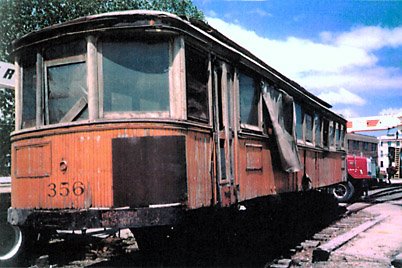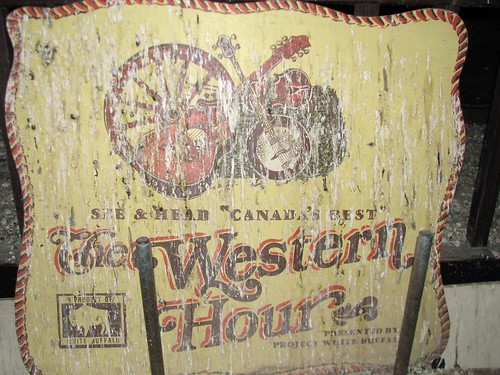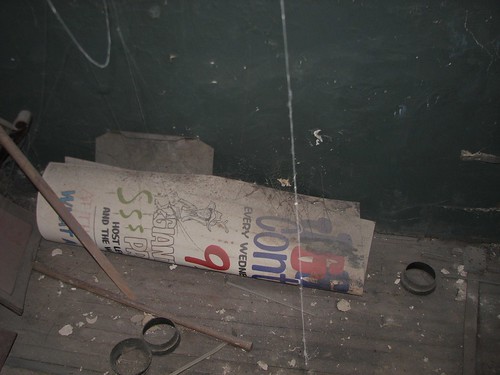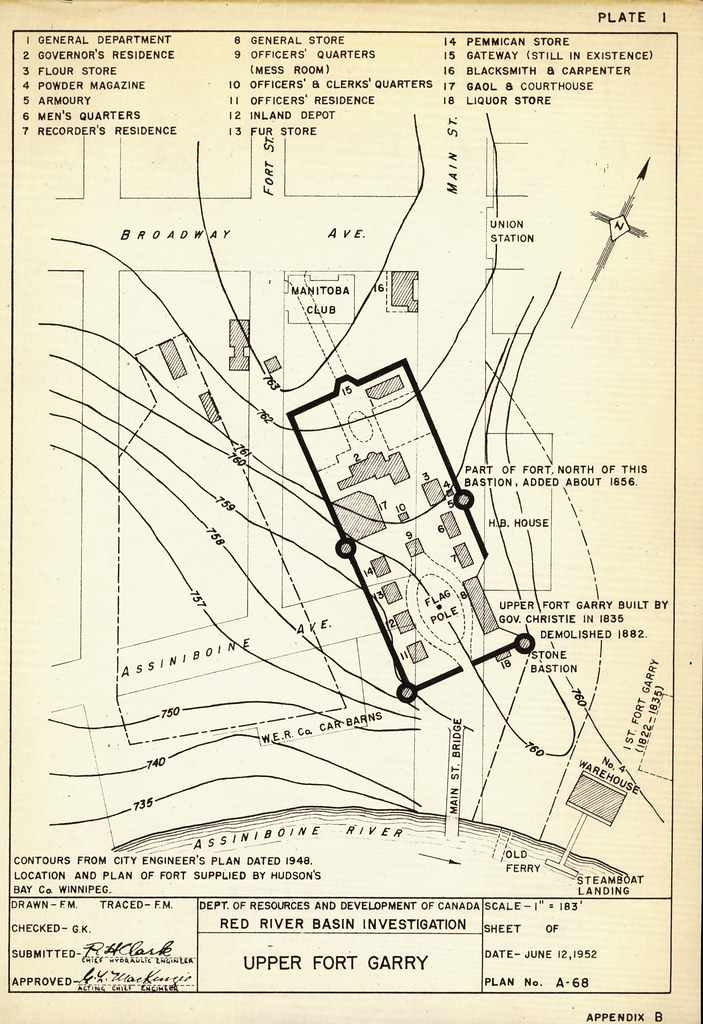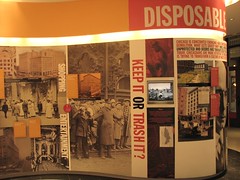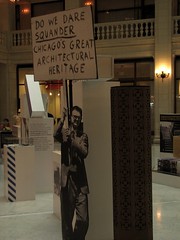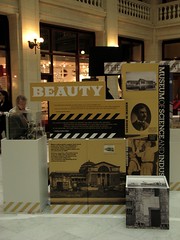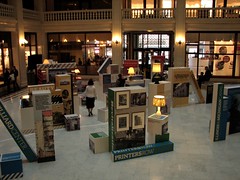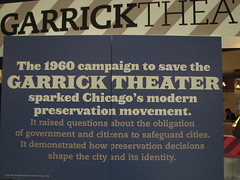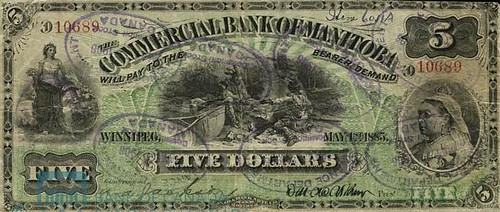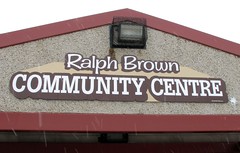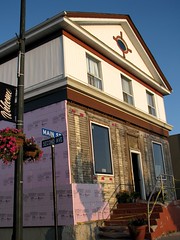© 2008, 2011, Christian Cassidy
William Kenneth Leishman, also known as the 'Flying Bandit' or 'Gentleman Bandit', has been referred to as “one of the most beloved of Canadian criminals.”
During the 1950s and early 1960s he committed numerous crimes, including bank robberies, plane thefts, prison breaks and his piéce de resistance: the March 1, 1966 heist of nearly $400,000 worth of gold bouillon from the Winnipeg International Airport. The latter is the largest gold theft in Canadian history.
Instead of being labelled a public enemy, the North Kildonan kitchenware salesman and father of seven charmed Canadians and gained a sort of folk hero status!
Holland, MB ca. 1910 (Source: Peel's)
Kenneth Leishman was born on a farm in Holland, Manitoba on July 20, 1931 to Norman Allan Leishman of Treherne and Irene Beatrice Agarand of Holland, Manitoba. The couple married in Winnipeg on September 25, 1928 and had three children, Elizabeth, Kenneth and Robert.
Norman was good with his hands and worked fixing farm machinery.
Holland was a pretty typical Manitoba farming community. At the time, it would have had at least three or four grain elevators that were serviced by the two railway tracks that passed through town. It also had a bustling Main Street thanks to the 400 or so area residents.
This, of course, changed as the Depression wore on. The effects of drought and bottomed-out commodity prices would have rippled from farmers to farm workers to townspeople.
Irene Agarand, ca. 1980s
In 1938, Norman and Irene separated and divorced in 1943. This left Mrs. Leishman was in a terrible predicament as a single mother of three in rural Manitoba at the tail end of the Depression. Fortunately for her, she managed to find a live-in domestic job with an area widower.
The man and Ken, then seven-years-old, did not get along. According to Irene, it led to the physical abuse of the boy. She was then given an ultimatum: give up your job, which was also your home, or give up Ken. She made what must have been a wrenching decision to send Ken into foster care.
Ken bounced from foster home to foster home and eventually landed in a residential orphanage after Children's Aid seized him from an abusive household.
In 1943, after the divorce was granted, Irene married William "Bill" Brooking of Treherne, Manitoba. He, too, had issues with Ken who at age 14 was sent to live and work on his grandparent's farm.
The farm brought a stability to Ken's life, though he was prone to accidents. One incident invovled being kicked in the head by a horse, something Irene claimed in the 1960s may have accounted for some of Ken's bad behavior, (Winnipeg Free Press Nov 2, 1966).
At age 16, Ken tried to reconcile with his father and came to live with him in Winnipeg.
Norman had enlisted in the army during World War II and was assigned to the A15 Infantry Training Centre at Shilo, Manitoba where he reached the rank of lance-corporal. There, he met Norah Michels who had enlisted with the Canadian Women's Army Corps and was also assigned to Shilo. The two married in 1944.
After the war, the couple settled in Winnipeg where Norman worked for Western Elevator and Motor Company and Norah for Eaton's. They initially lived in a small apartment on Garry Street before moving to a house on Lipton Street in the West End.
Ken stayed with the couple on Lipton Street. In the summer (likely of 1947) he went to cottage country to work at a resort in Kenora. He ended up braking his ankle not to long into the job and had to return to Winnipeg.
At age 17, Ken returned to one of the towns he stayed at while a child to attend a funeral, likely Holland or Treherne. There, he met Elva Shields. She would later say that it was "love at fist sight". The two stayed in touch and were married the following year and relocated to Winnipeg.
Elva got a sign of things to come when Ken spent a few months of their newlywed year in jail.
Ken worked part-time with his father at the elevator repair company which gave him access to a variety of buildings. He would case the interior for products he wanted then came back after hours, broke in and, posing as an employee of that company, called a transport company to come get the goods and deliver them to the couple's suite on Gertrude Street.
In February 1950, his thefts included: a radio from a downtown building; a fridge and range from the Westinghouse building; a chesterfield suite, dinette suite and chairs from a Genser's warehouse on Market Street; a bed and kitchen suite from the Genser's warehouse on Ross Avenue. The total value of the goods was just under $1,000.
The arrest came in early March while at Genser's Ross Avenue facility again. The transport company dispatcher was suspicious of the late night call and tipped off police.
Ken pleaded guilty and was sentenced to nine months in jail, he apparently got out in three due to good behavior.
Nov 2, 1966, Winnipeg Free Press
After jail, Ken pursued another interest of his: flying.
It is unclear where this love came from. He could have been exposed to small airplanes in his youth through crop-dusters servicing Manitoba farmland. Perhaps it was during World War II when south west Manitoba was dotted with hangars, airfields and control towers for the Commonwealth Air Training Plan (CATP).
Ken took flying lessons and began a series of machinery repair and sales jobs where he could use his plane to fly in to rural communities to work. (In October 1953, he received a two-year suspended sentence for flying without a pilot's license - it is unclear whether he obtained one after that or if he just kept flying.)
Street directories show that through the 1950s he had a new job and a new address each year until 1956. That's when the family, which now consisted of five children, bought a house on Lindsay Street in River Heights.
In March 1957, Ken was a member of the newly founded Manitoba Volunteer Air Patrol, a civil defense organization and was in charge of organizing a national meeting in Winnipeg on the topic of having a nation-wide VAP. This invovled meeting high-level officials in Ottawa.
Outward appearances were that Ken was doing well with a house in a tony suburb, a plane, a Cadillac and his expensive wardrobe. The truth was that he was living beyond his means and in 1957 started supplementing his income by robbing banks.

Ken decided that he would go to Toronto to commit the robberies. He later told police that while Manitobans had money, it was usually tied up in land, equipment and other investments. Toronto, he felt, was where cash flowed more freely.
In December 1957, Leishman boarded a commercial flight to Toronto, rented a nice car and checked into a luxury downtown hotel. The following day, after some clothes shopping, he committed what the Canadian Press reported was “one of the most daring robberies on record.”
Posing as "Mr. Gair", a Buffalo businessman, he entered the Toronto-Dominion Bank at Yonge and Albert and asked to meet with the manager. Inside the office, Ken produced a gun, forced the manager to write a cashiers cheque for $10,000 and stayed with him while he cashed it at one of the tellers.
Ken then had the manager escort him to his car and wished the manager and his family a very Merry Christmas before speeding off. he returned the car and took his return flight to Winnipeg. Hi family thought he had been on one of his fly-in sales jobs.
Witnesses described Ken as well-dressed, polite and dignified, which led to the "Gentleman bandit" nickname.
Leishman returned to the airport and flew back to Winnipeg that night to a family who thought he was off on a repair trip to rural Manitoba.
In March 1958, Ken was back in Toronto to rob the Canadian Imperial Bank of Commerce at the busy intersection of Bloor and Yonge Streets. This time, when the gun was produced the manager became angry at Ken and a scuffle ensued. A staff member noticed and sounded the alarm.
While fleeing, Leishman tripped over someone on the sidewalk outside. Another pedestrian, a minister, kicked the gun out of his hand. He was held by bank staff until the police arrived.

March 18, 1958, Winnipeg Free Press
Ken's arrest and the exploits of "The Flying Bandit" were front page news. The fact that the wannabe criminal mastermind wasn't some lowlife, but a well dressed repairman from River Heights gave the story extra life.
As for Elva, who was expecting the couple's sixth child at the time, she claimed she knew nothing of the robberies and only learned about his arrest when two of her children came home from school in tears after having been teased about it by fellow students. She said, "I never pry into his affairs. He is a perfect husband and father and just a wonderful guy."
Ken plead guilty to the two robberies and he was given a 12-year sentence to be served at Stony Mountain Penitentiary. He was paroled after just 3.5 years, described by Stony’s warden as a ‘model prisoner’.
Elva for a time operated Elva's gift shop at 2635 Portage Avenue in St. James to put food on the table while Ken served his sentence.
After jail, Ken went back to fly-in sales with a company called World Wide Distributors selling kitchenware and silverware. After a couple of years with the company he was a supervisor and they purchased a new family home on Mark Pearce Avenue in North Kildonan.
Despite appearing to settle down, Ken was actually plotting his biggest caper yet.
March 12, 1966, Winnipeg Free Press
The next time Winnipeggers read about Ken Leishman on the front page of the paper was in March 1966 when he was arrested for a
parole violation at Vancouver's airport. He was returned to the city under RCMP escort on March 11 in what the Winnipeg Free Press called "one of the hushiest hush-hush police operations on record in Winnipeg."
Proceedings got underway to have Leishman returned to Stony Mountain to fulfill the remainder of his 12-year bank robbery sentence while Winnipeg police were working hard to get him for something bigger: the Winnipeg International Airport gold heist of March 1, 1966.
March 2, 1966, Winnipeg Free Press
TransAir was an airline that connected northwest Ontario and Winnipeg. Ken knew that it regularly flew gold bullion from Red Lake, Ontario to the Winnipeg International Airport where it was transferred to an Air Canada flight bound for the Royal Canadian Mint in Ottawa.
Ken's plan was daring and simple: to intercept the gold at the airport and drive off into the sunset.
For this scheme, Ken would need accomplices. They included three bar buddies and a Winnipeg lawyer named Harry Backlin. While studying law, Backlin visited prisoners at Stony Mountain. The two hit it off and even even went into business together after Ken was released. They operated a small cleaning supplies wholesale business on the side.
Ken assembled other items needed for the plan: blank waybills from an Air Canada Cargo counter and two pairs of white coveralls on which crude Air Canada logos were stenciled.
An accomplice in Red Lake tipped Ken off that the TransAir flight arriving on the night of March 1, 1966 would contain a gold shipment and the plan was put into motion.
When the flight arrived, two of the bar buddies stole an Air Canada Cargo van from an airport parking lot and drive onto the tarmac. They met the plane, showed the TransAir ground crew a fake waybill and the gold was loaded into to their van.
The two drove away with nearly $400,000 in gold bullion, (worth about $13 million today), in 12 wooden boxes. It was Canada's largest-ever gold heist.
March 2, 1966, Winnipeg Free Press
After the heist, the two accomplices drove about a kilometre away where they had stashed a getaway car. The cargo, which weighed about 600 pounds, was transferred and they drove to the small office / warehouse that Ken and Backlin ran their cleaning supply business out of. From there, it was up to Ken to drive it to the farm of a relative of Backlin's a couple of hours away from the city.
There were a couple of factors that played on Ken's mind.
One was the fact that the two airlines would have figured out by now that something had gone awry on the tarmac. There was a strong possibility that city police and RCMP would have roadblocks set up on major routes out of town.
The other concern was that a Colorado Low was sweeping into the province bringing with it heavy winds and snowfall. (Within 36 hours it would turn into a full-fledged blizzard, one of Winnipeg's worst on record.)
Ken instead decided to drive the gold, still in their boxes, to Backlin's suburban Winnipeg home. Backlin was away, but his mother was house sitting. Ken told her that the cargo was boxes of moose meat that Ken had ordered. He was shown the chest freezer in the basement and stashed the gold there.
When Backlin returned home, he was unimpressed with Ken's decision and at night took the boxes and buried them in the snow in his back yard to avoid raising his wife's suspicion.
March 22, 1966, Winnipeg Free Press
The two men had to act fast as the snow wasn't going to stay around forever. They decided to forego stashing it somewhere longer term and instead sell it off on the black market in Hong Kong. Unfortunately, both had passport issues.
Unfortunately, both men had passport issues. Backlin had recently anglicized his name and his old passport was at the passport office while he awaited a new one. Ken was still on parole and if someone checked the name on his passport they would find that he could not leave Manitoba, much less the country.
Still, the two decided to take the chance. Backlin bought a ticket to Hong Kong and Ken would travel there on his passport.
When Ken reached the Vancouver airport with part of one of the gold bars he noticed a strong police presence. One source says that his name was paged over the PA system. He knew it was just a matter of time before he was caught, so he ditched the gold. (To this day, nobody knows what happened to the gold.)
Winnipeg Free Press, March 12, 1966
As Ken was being escorted back to Winnipeg for a parole violation, he didn't realize that he was about to be charged with the robbery.
The abandoned Air Canada
van was found with a fingerprint of one of the accomplices inside it. Police eventually tracked the two drivers down and through interviews and the use of informants acting as cellmates the story of the theft unravelled.
O
n March 20, 1966, Ken and his four accomplices, including Backlin,were charged with conspiracy and robbery. For Ken, it meant being returned to Headingley Jail to continue serving his "flying bandit" sentence and await trial.
Returned from Indiana (source)
While at Headingley, Ken masterminded the escape of ten prisoners, himself included.
On the evening of September 1, 1966 one member of the group overpowered a guard and stole his keys. Others entered the office and stole weapons. Within 15 minutes they were outside the gates. Ken, along with three other prisoners, (a murderer, a rapist and someone awaiting transfer to Selkirk Mental Hospital), stole a Chevy from the prison parking lot and took off.
News of the escape set off what is believed to be Manitoba's largest manhunt. Every municipal police force was placed on high alert and told to set up road blocks at the perimeter of their communities. The RCMP called in every officer on the force and manned their own roadblocks on highways throughout southern Manitoba. Bordering provinces and states were also alerted as were airports.
Ken and company made it to Steinbach where he stole a plane and the four headed across the border. They landed in a farmer's filed outside Gary, Indiana. He managed to sweet talk the farmer into given them a ride into town.
The men rented a hotel room and went down to the bar to celebrate. The bartender recognized the men from a report on the news, their nationality confirmed when tehy used Canadian bills to pay for their room and drinks, and called police.
When police arrived, Ken and one of the escapees gave themselves up. The other two led police on a foot chase and were captured.
 The arresting officers from the West Kildonan PD (source)
The arresting officers from the West Kildonan PD (source)
Ken was then held at the Vaughan Street Jail to await trial on an even longer list of charges.
By this time, the Vaughan Street facility was used mainly as a remand centre as the city's Public Safety Building had just opened. Ken was held in an empty wing and had access to the corridor outside of his cell.
On October 30, 1966, Ken managed to pick the lock on the old steel door at the end of the hall, overpower three guards and escape through a back door and over a fence.
Four hours after the break, Ken called his lawyer from a phone box at Main Street and Jefferson Avenue. The lawyer either convinced himself to give up or turned Ken in as just a few minutes later two officeers from the West Kildonan picked him up. He surrendered peacefully.
The
next day, jail administrators had experts go over the door to see how
he managed to turn the locking bolts on
the ancient door and they were baffled, calling the escape 'miraculous'. (After his conviction they had Ken re-enact his MacGyver-esque
escape for them. He used a strip of cloth and piece of wire.)
On November 1, 1966, Leishman plead guilty to all nine charges against him. He received a sentence of nearly 15 years, seven for the gold heist and escapes plus the remaining eight years left on his Toronto sentence.
November 2, 1966, Winnipeg Free Press
Ken spent his years in prison reading and writing poetry. he had one more escape up his sleeve, but this time in was administrative.
In June 1974, Ken applied for parole and was denied. He then requested an official review of the length of his sentence which was a complicated mesh of various sentences spanning years, osome to be served concurrently, some not.
Leishman struck gold when the Parole Board review panel ruled that, his sentence HAD been improperly pieced together and that he was to be released immediately! The ruling sparked a review of hundreds of similar sentences around the country.

In 1977, the Leishman family moved to Red
Lake, Ontario where Ken took a job as a bush pilot and opened a tourist shop. The couple, who became devout Mormons, were well liked by community members and
Ken even served as the chair of the local Chamber of Commerce.
The notoriety of being the "Flying Bandit" made Ken a cause celebre. There were TV appearances and newspaper interviews where he was more than happy to relive his crimes and charm reporters and audience members.
In early 1979, the Winnipeg papers reported that Ken was working on a manuscript that had attracted the attention of Hollywood actor Darren McGavin, who bought the rights to Ken's story. According to Ken, he and his wife had gone to California to meet McGavin and locations were being scouted north of the border.
Ken continued to fly and on December 14, 1979, Leishman was performing a medi-vac flight out of Red Lake when his plane disappeared in Northern Ontario. The following spring, a Canadian Forces search flight found the wreckage. The bodies of the patient and medical assistant aboard were positively identified but all they could find of Leishman was his wallet and some scraps of clothing.
Given his colourful past, there was speculation that the Flying Bandit had escaped again. At the inquest, however, experts concluded that his body was likely taken away and eaten by wolves.
On December 16, 1980, Leishman was declared legally dead at the age of 48. He left behind his wife of 30 years, seven children and quite a legend.
His obituary, which makes no mention of the time before his release in 1977, includes a poem written by Leishman:
The day's are long and endless
And the sun does not take rest
Tis a barren hostile country
And man is put to test.
Yet there's a compelling remote beauty
In this land so fresh and clean
With it's waters pure as crystal
And trout that few have seen.
I've drunk of nature's beauty
And I've suffered natures pests
I've co-existed with God's creatures
And I've met and passed the test.
But this is a land of special beauty
It's a land for special men.
When I leave I'll do so gladly
But I know I'll come again.
I'll bear memories of kind people
Of sunsets without end
I'll respect and fear the northland
And I'll do so as a friend.
Source: Winnipeg Free Press, May 7, 1980
Update 2011:
I originally posted this in 2008, (this is a 2011 update.) Since then, it has remained one of my most-read blog posts showing that there is still a great deal of interest in Leishman and his antics. Why?
I wasn't around at that time, so I can only guess that being an "everyday man", (a kitchenware salesman from North Kildonan with a wife and kids), pulling off crimes worthy of a Hollywood film had a huge appeal.
This was also the 1960s - a decade of rebelling against authority. That is exactly what Ken did in a typically Canadian courteous way. Even though the authorities always caught up with him, he still kept trying.
Mix in a sense of humour and charm that seemed to enthrall people and you had quite the figure.
As you will see in the comments below his demeanor appears not to be something just for the cameras. He appears to have been a genuinely charming person, well liked and respected by those who knew him.
Online news stories
The Flying Bandit
Winnipeg Free Press, April 29, 2018
Ottawa Bound Bullion intercepted at airport
Canadian Press, March 1966
He went on business trips - to rob banks
Saturday Magazine, July 18, 1958
Flying Bandit out again - this time it's legal
Canadian Press, May 1974
The Flying Bandit Died Hard
Macleans, December 29, 1980
Other reference
RCMP Court Briefing for 1966 Trial of Ken Leishman et al
The Flying Bandit and the Great Winnipeg Gold Heist
Adaptations of the Flying Bandit's story
- a play (The Flying Bandit, by Lindsay Price);
- a book (The Flying Bandit by Heather Robertson);
- a documentary (Ken Leishman: The Flying Bandit - trailer above);
- a podcast in the True North Heists series, including an interview with on of Ken's sons
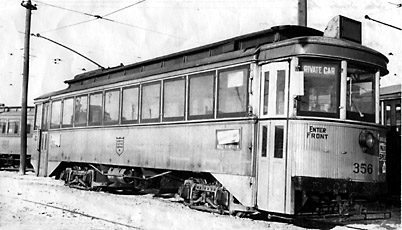 You may have heard about Streetcar 356, if not, a history of 356 from Heritage Winnipeg's website. With her 100th anniversary coming up in 2009 there is movement to get her restored by then !
You may have heard about Streetcar 356, if not, a history of 356 from Heritage Winnipeg's website. With her 100th anniversary coming up in 2009 there is movement to get her restored by then !
